The Blue Mosque in Istanbul, also known as Sultan Ahmed Mosque, is a historic and architectural marvel. It features striking blue tiles and six minarets.
The Blue Mosque stands in the heart of Istanbul, attracting millions of visitors annually. Built between 1609 and 1616 during Sultan Ahmed I’s reign, it remains a symbol of Ottoman architecture. The mosque’s interior boasts over 20,000 handmade ceramic tiles, predominantly blue, giving it its famous name.
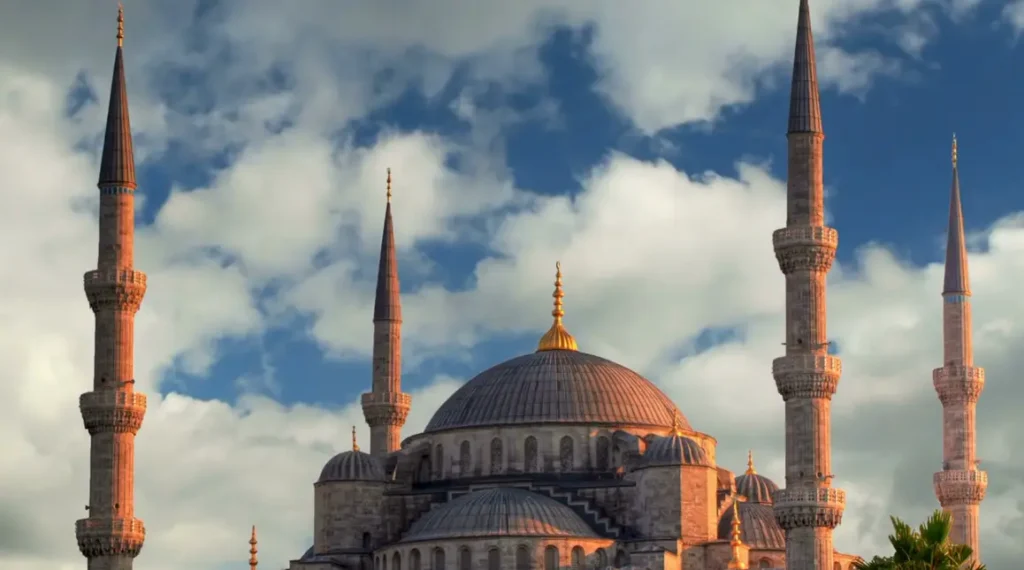
The cascading domes and six towering minarets create a stunning skyline. The mosque serves both as a place of worship and a major tourist attraction. Visitors can explore its rich history and intricate design. Its location near the Hagia Sophia makes it a central point in Istanbul’s historic district.
History And Significance
The Blue Mosque in Istanbul, also known as the Sultan Ahmed Mosque, stands as a magnificent example of Ottoman architecture. Built in the early 17th century, this iconic structure has captured the hearts of millions of visitors. Its historical significance and breathtaking beauty make it a must-see destination. The Blue Mosque’s rich history and cultural importance continue to fascinate people from around the world.
Construction Timeline
The construction of the Blue Mosque in Istanbul began in 1609 under the orders of Sultan Ahmed I. The project took seven years to complete, finishing in 1616. The mosque was designed by the architect Sedefkâr Mehmed Ağa, a student of the renowned Mimar Sinan. It was built to reassert Ottoman power and demonstrate the empire’s architectural prowess.
Here is a brief timeline of its construction:
- 1609: Groundbreaking ceremony.
- 1610: Foundation and initial structure.
- 1612: Main dome construction.
- 1614: Interior decoration and tile work.
- 1616: Completion and opening for worship.
The mosque features a grand courtyard, a large prayer hall, and six minarets. Its interior is adorned with over 20,000 handmade ceramic tiles, predominantly blue, which gives the mosque its famous name. The construction of the mosque was a monumental task involving thousands of workers and artisans.
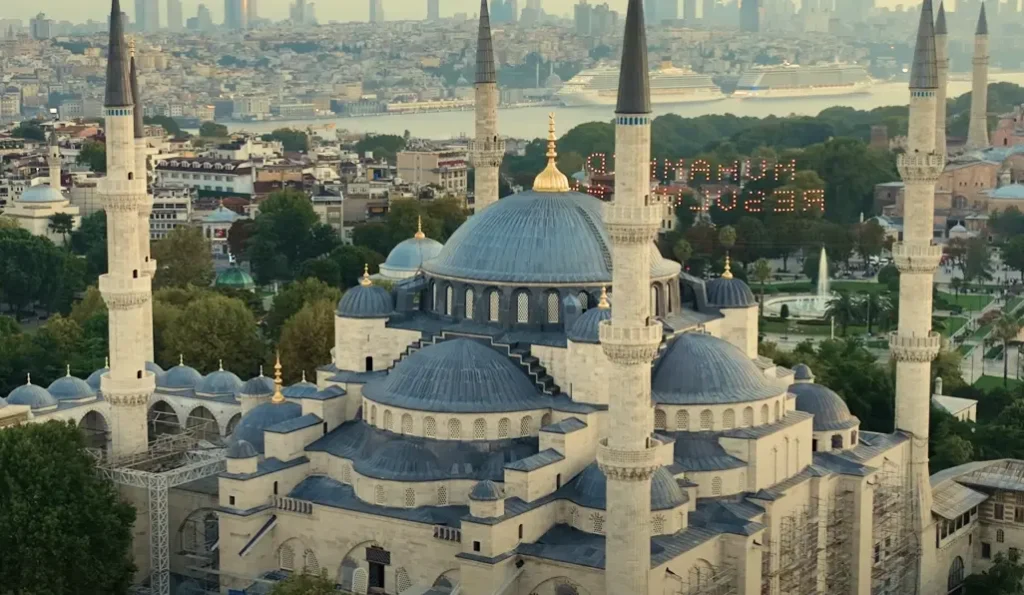
Cultural Importance
The Blue Mosque in Istanbul holds significant cultural importance. It is not just a place of worship but also a symbol of Turkey’s rich history. The mosque continues to serve as an active place of worship. It attracts thousands of visitors each day, showcasing the architectural brilliance of the Ottoman Empire.
Key cultural aspects include:
- Religious significance: The mosque is a major centre for Islamic worship.
- Architectural marvel: It represents the pinnacle of Ottoman architectural style.
- Tourist attraction: Visitors from around the globe come to admire its beauty.
- Educational value: The mosque provides insights into Ottoman history and culture.
The Blue Mosque’s visiting hours vary, allowing tourists to plan their visits accordingly. The mosque is open to visitors outside of prayer times, ensuring that worshippers can pray in peace. The Blue Mosque is not only a historical landmark but also a living, breathing part of Istanbul’s cultural fabric.
Architectural Features
The Blue Mosque in Istanbul is a stunning piece of architecture. It is known for its grand design and historical significance, and it attracts visitors from all over the world. The architectural features of the Blue Mosque are simply breathtaking. Let’s explore its dome, minarets, and interior design.
Dome And Minarets
The Blue Mosque’s dome is one of its most striking features. It is large and beautifully decorated. The central dome is surrounded by smaller domes, creating a stunning visual effect. The mosque also has six minarets, whereas most mosques have only one or two. This makes the Blue Mosque unique.
The minarets are tall and slender, reaching high into the sky. Each minaret has three balconies from which the call to prayer is announced. The minarets are a key part of the mosque’s design and add to its grandeur.
- The central dome is 23.5 meters in diameter.
- The height of the central dome is 43 meters.
- There are 260 windows in the mosque.
- The six minarets are 64 meters tall.
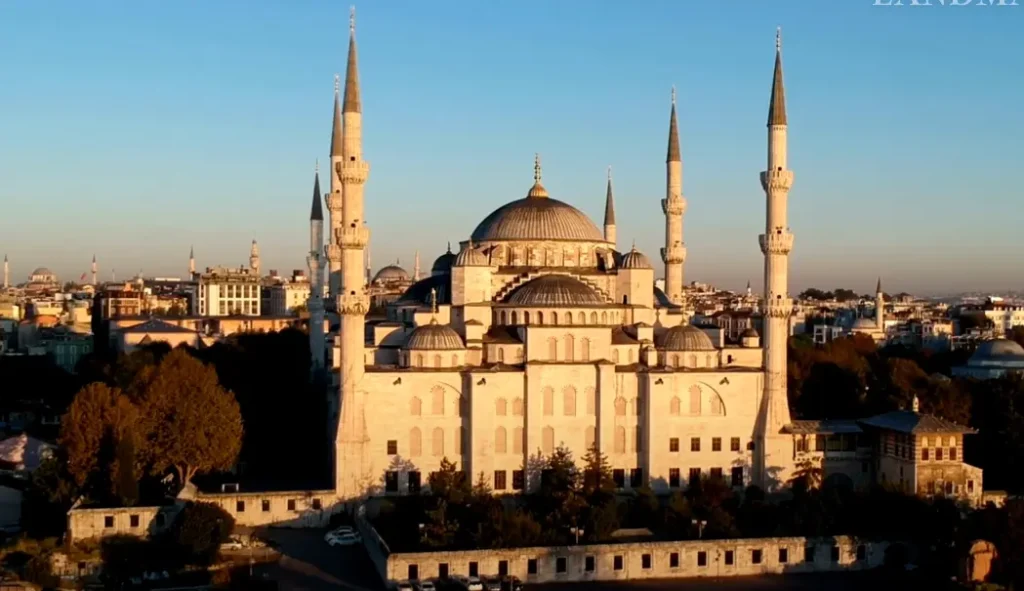
Interior Design
The interior design of the Blue Mosque is equally impressive. The walls are covered with over 20,000 ceramic tiles, which are blue and give the mosque its name. The designs on the tiles are intricate and beautiful, featuring flowers, trees, and abstract patterns.
The carpets inside the mosque are also noteworthy. They are soft and luxurious. The carpets are replaced regularly to keep them clean and fresh. The chandeliers add to the beauty of the interior. They are large and ornate. The chandeliers are decorated with ostrich eggs and other elements.
Feature
Description
Tiles Over 20,000 blue ceramic tiles
Carpets Soft, luxurious, regularly replaced
Chandeliers Large, ornate, decorated with ostrich eggs
Visitor Experience
The Blue Mosque in Istanbul is one of the most iconic landmarks in Turkey. Known for its stunning architecture and rich history, it attracts millions of visitors every year. The visitor experience at this magnificent mosque is truly unforgettable. From the moment you step inside, you are greeted by the beautiful blue tiles that give the mosque its name. The sense of peace and tranquillity is palpable, making it a must-visit for anyone travelling to Istanbul.
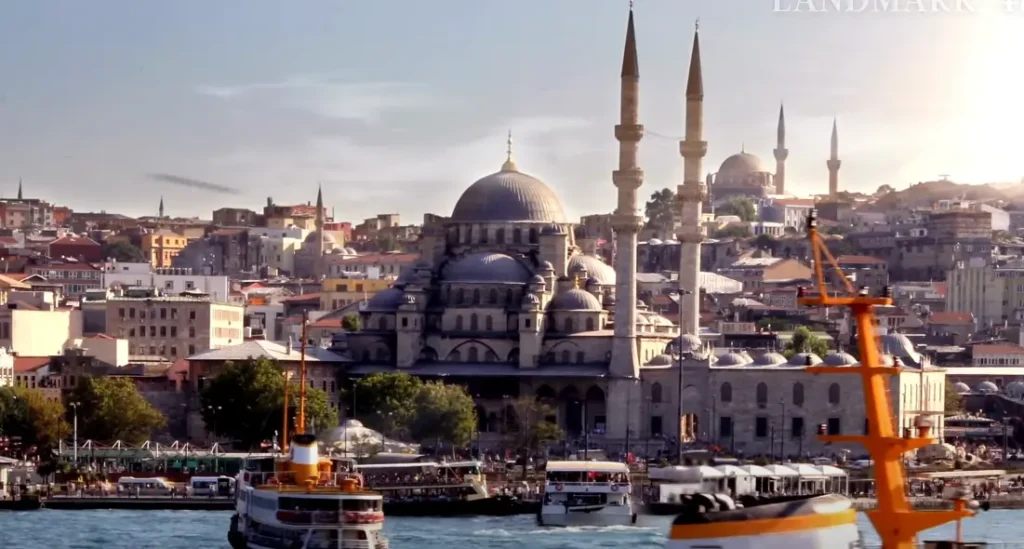
Guided Tours
Taking a guided tour of the Blue Mosque in Istanbul can significantly enhance your visit. Guided tours provide a wealth of information that you might miss on your own. Knowledgeable guides share fascinating stories and historical facts about the mosque.
Some benefits of guided tours include:
- In-depth knowledge of the mosque’s history and architecture.
- Access to restricted areas that are not open to the general public.
- Personalized experience tailored to your interests.
Many tours also include information on Blue Mosque prayer times in Istanbul, which can be crucial for visitors who wish to observe or participate in the prayers. How to get to the Blue Mosque is also often provided, ensuring you can easily find your way to this historic site.
Photography Tips
Capturing the beauty of The Blue Mosque in Istanbul can be a rewarding experience. Here are some tips to help you take stunning photos:
- Arrive early to avoid the crowds and get the best lighting.
- Use a wide-angle lens to capture the grandeur of the mosque’s interior.
- Respect the prayer times and avoid taking photos during these periods.
For indoor shots, consider using a tripod to keep your camera steady. Proper lighting makes the blue tiles and intricate designs look stunning. Blue Mosque prayer times in Istanbul can affect your photography schedule, so plan accordingly.
For outdoor shots, the best time is during the golden hour, either just after sunrise or just before sunset. This lighting enhances the mosque’s beautiful exterior and surrounding landscape. By following these tips, you can capture the essence of this incredible landmark.
Cultural Events
The Blue Mosque in Istanbul is a marvel of Ottoman architecture. It is also known as the Sultan Ahmed Mosque. This famous mosque attracts visitors from all over the world. It hosts many cultural events that showcase its rich heritage. These events include religious ceremonies, festivals, and exhibitions. Each event reveals a new layer of the mosque’s history and significance.
Religious Ceremonies
The Blue Mosque in Istanbul is an active place of worship. It holds several religious ceremonies throughout the year. These ceremonies are deeply rooted in Islamic traditions. They offer a glimpse into the spiritual life of the community.
Table of Contents
One of the most important ceremonies is the Friday prayer. Thousands of worshippers gather for this weekly event, which transforms the mosque into a sea of people united in prayer.
- Daily Prayers: Held five times a day.
- Special Prayers: During Ramadan and other Islamic holidays.
- Quran Recitations: Often done in the evenings.
Visitors should be aware of the Blue Mosque dress code in Istanbul. Modest clothing is required, and women must cover their heads with a scarf. This shows respect for the mosque’s traditions.
Festivals And Exhibitions
The Blue Mosque hosts various festivals and exhibitions. These events celebrate the mosque’s history and culture. They attract both locals and tourists.
One of the most popular festivals is the Istanbul Tulip Festival. This event, which takes place every April, fills the mosque’s courtyard with vibrant tulips and showcases the beautiful gardens around the mosque.
Festival
Month
Highlights
Tulip Festival April Colorful tulip displays
Ramadan Varies Special night prayers and iftar meals
Eid al-Fitr Varies Community gatherings and feasts
Interesting facts about Blue Mosque are often shared during these events. For example, it has six minarets, which was unique at the time of its construction. These tidbits make the experience even more enriching for visitors.
Surrounding Attractions
The Blue Mosque in Istanbul is a stunning marvel of Ottoman architecture. Known for its exquisite blue tiles adorning its interior walls, it draws visitors from around the globe. Beyond its beauty, the mosque is surrounded by numerous other historical attractions, making it a perfect destination for those interested in Turkey’s rich cultural heritage.
Hippodrome
The Hippodrome of Constantinople, now known as Sultanahmet Square, is a historic site near The Blue Mosque in Istanbul. It was once a grand stadium for chariot races, social gatherings, and political events during the Byzantine Empire. Today, visitors can explore the remnants of this ancient structure and imagine the grandeur of past events.
Several notable monuments remain at the Hippodrome:
- The Obelisk of Theodosius: An ancient Egyptian obelisk brought to Istanbul by Emperor Theodosius in the 4th century.
- The Serpentine Column: A bronze column originally from the Temple of Apollo at Delphi, erected in 324 AD.
- The German Fountain: A gift from the German Emperor Wilhelm II, constructed in 1900.
Walking through the Hippodrome, one can feel the echoes of history. The site provides a fascinating glimpse into the city’s past. Its proximity to The Blue Mosque makes it a convenient and enriching addition to any visit.
Topkapi Palace
Topkapi Palace, located a short distance from The Blue Mosque in Istanbul, was the primary residence of Ottoman sultans for nearly 400 years. The palace complex is vast, covering approximately 700,000 square meters. It showcases the opulence and splendour of the Ottoman Empire.
The palace includes several key areas:
Area
Description
Imperial Harem is Home to the sultan’s family and concubines, featuring lavish rooms and intricate designs.
Palace Kitchens is responsible for feeding thousands of people daily with displays of historical kitchenware.
Sacred Relics Houses religious artefacts, including items believed to belong to the Prophet Muhammad.
Visitors can wander through the beautifully decorated rooms and courtyards. The Blue Mosque’s interior architectural details are comparable to the lavish designs of the palace. Exploring Topkapi Palace provides insights into the lives of the sultans and their court. It’s a must-see for anyone interested in why they should visit Blue Mosque Istanbul and its surrounding attractions.
Blue Mosque History
The Blue Mosque in Istanbul is a stunning piece of architecture. It was built in the early 1600s and is also known as the Sultan Ahmed Mosque. Its name comes from the blue tiles inside, which give the mosque a unique look. Many people visit this mosque every year, and it is one of the most famous landmarks in Turkey.
Interesting Facts About Blue Mosque
The Blue Mosque has six minarets, whereas most mosques have only one to four. This makes it unique. The mosque has over 20,000 handmade blue and white tiles. It also has 260 windows that let in a lot of light. The mosque is still used for prayers today.
Blue Mosque Dress Code Istanbul
Visitors must follow a dress code. Women should cover their heads and wear long skirts or pants. Men should not wear shorts. Everyone must take off their shoes. The mosque provides scarves and skirts if needed.
Frequently Asked Questions
What Is The Blue Mosque?
The Blue Mosque, or Sultan Ahmed Mosque, is a historic mosque in Istanbul, Turkey, known for its stunning blue tiles.
Why Is The Blue Mosque Famous?
It’s famous for its magnificent architecture, six minarets, and beautiful blue Iznik tiles that adorn its interior.
When Was The Blue Mosque Built?
The Blue Mosque was built between 1609 and 1616 during the rule of Sultan Ahmed I.
Can You Visit The Blue Mosque?
Yes, the Blue Mosque is open to visitors outside of prayer times. Modest clothing is required.
How To Get To The Blue Mosque?
The Blue Mosque is located in the Sultanahmet district, easily accessible by tram, bus, or a short walk from other landmarks.
Conclusion
The Blue Mosque in Istanbul is a must-see destination. Its stunning architecture and rich history captivate visitors. Exploring its beauty offers a unique glimpse into the past. Don’t miss out on experiencing this iconic landmark. Plan your visit today and immerse yourself in the wonders of Istanbul.



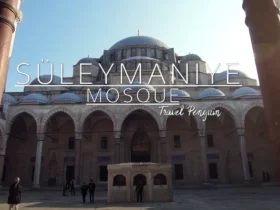
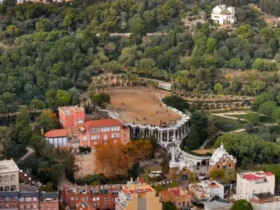
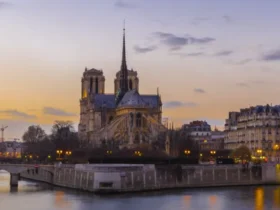


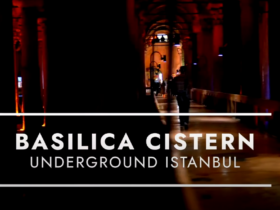
Leave a Review